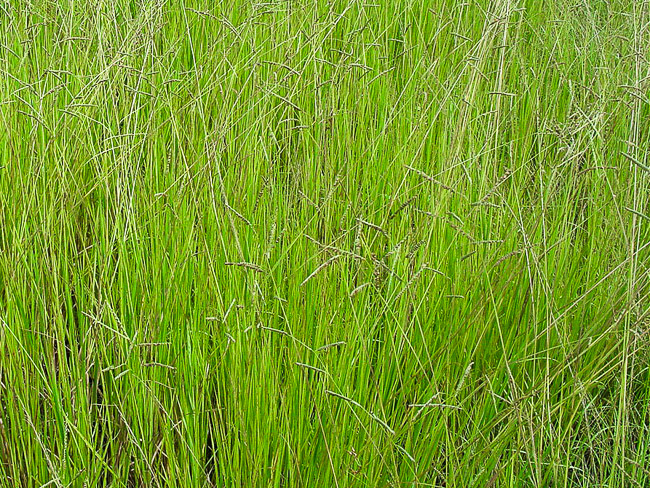Common Name: Brunswickgrass
Family: Poaceae
Common Synonyms: Paspalum lepton
USDA Hardiness Zone: NA
Growth Habit: Perennial grass
Origin: South America
FISC Category: -
FDACS Listed Noxious Weed: No
Introduction Date: A weed of pasture grasses. Earliest Florida specimen vouchered in 1982
IFAS Assessment:


Plants perennial; rhizomatous, rhizomes 5-25 cm, conspicuous. Culms 10-70 cm, erect to ascending; nodes glabrous. Sheaths glabrous, pubescent apically; ligules 1.2-1.5 mm; blades 6-20 cm long, 4-5 mm wide, flat to conduplicate, glabrous or pubescent. Panicles terminal, with 2-5 racemosely arranged branches; branches 1.4-5.2 cm, divergent; branch axes about 0.8 mm wide, glabrous, terminating in a spikelet. Spikelets 2.3-2.7 mm long, 1.4-1.8 mm wide, paired, appressed to or divergent from the branch axes, elliptic, dark brown. Lower glumes absent; upper glumes shortly pubescent, 5-veined, margins entire; lower lemmas transversely rugose at maturity, glabrous, 5-veined, margins entire; upper florets dark glossy brown. Caryopses about 1.8 mm long, 1.4 mm wide, ellipsoidal.
Disturbed areas, pastures, turf
NA

Application of hexazinone should occur from June through September for optimal control. it will likely take at least 2 to 3 years of hexazinone applications for complete control.
IFAS, UF. 2021. Brunswickgrass (Paspalum nicorae): a weed contaminant in southern pastures and bahiagrass seed production fields. https://edis.ifas.ufl.edu/publication/AG408 Accessed April 3, 2022.
Wunderlin, R. P., and B. F. Hansen. 2008. Atlas of Florida Vascular Plants (http://florida.plantatlas.usf.edu/).[S. M. Landry and K. N. Campbell (application development), Florida Center for Community Design and Research.] Institute for Systematic Botany, University of South Florida, Tampa.
Boufford, D. E. Fumaria. In: Flora of North America Editorial Committee, eds. 1993+. Flora of North America North of Mexico [Online]. 22+ vols. New York and Oxford. Vol. 25 http://floranorthamerica.org/Paspalum_nicorae. Accessed [3 August 2022].